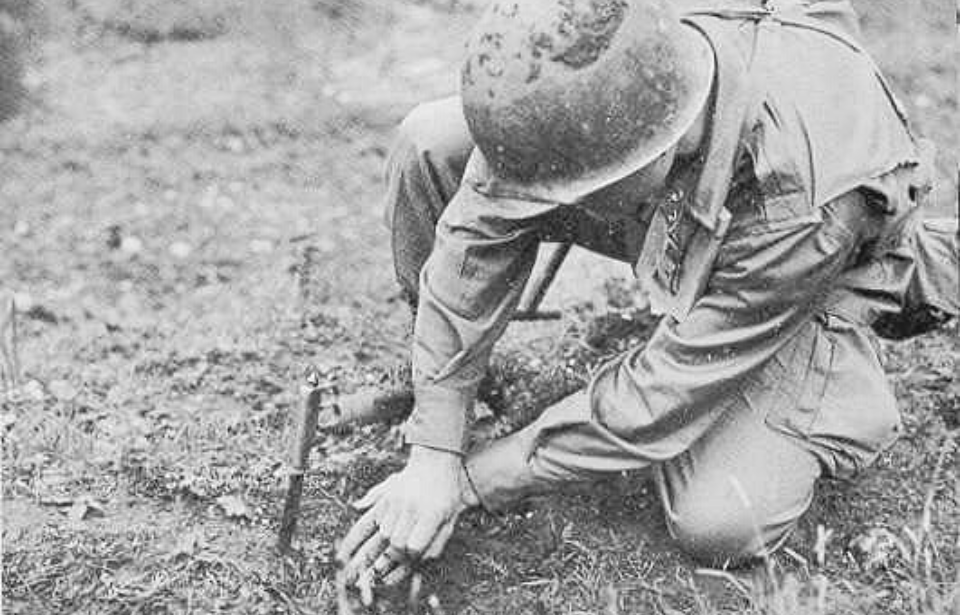The S-mine, originally named the Schrapnellmine, was a German bounding mine used extensively by Wehrmacht troops throughout the Second World War. When detonated, it thrust into the air, leading American and Allied infantrymen to give it the nicknames “Bouncing Betty” and “frog-mine.” Its effectiveness quickly earned it a reputation for being one of the most feared weapons on the battlefield.
The S-mine would “bounce” up when triggered
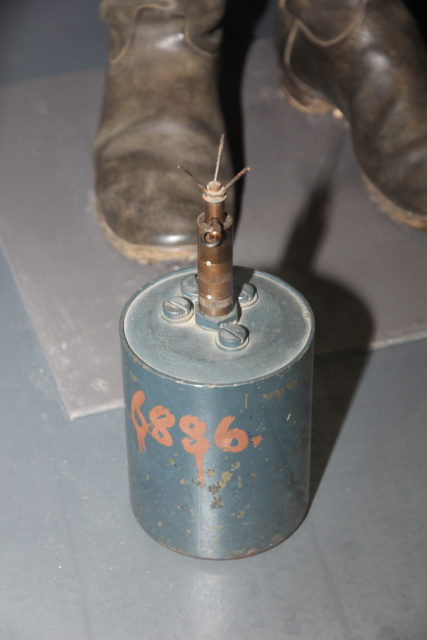
The S-mine was developed in the 1930s by German engineers as a new anti-personnel explosive. Production began in 1935, and when the Second World War broke out, thousands were distributed and buried to prevent Allied troops from gaining access to German-occupied areas.
The mine consisted of a large cylinder with an inner cavity of explosives that itself was surrounded by sharp metal fragments. An S.Mi.Z.35 pressure delay trigger pipe was attached once the device was buried, with just three prongs left visible above the ground. When one of these prongs was disturbed, the mine would trigger.
Once triggered, the S-mine would shoot upward, or “bounce,” around three feet, thanks to a black powder propellant. The fuse was designed to provide a half-second delay, to allow the device to shoot up the necessary height before detonating. Once that time was up, the mine would explode, sending the shrapnel inside flying at speeds that could seriously injure those nearby.
Use on the beaches of Normandy
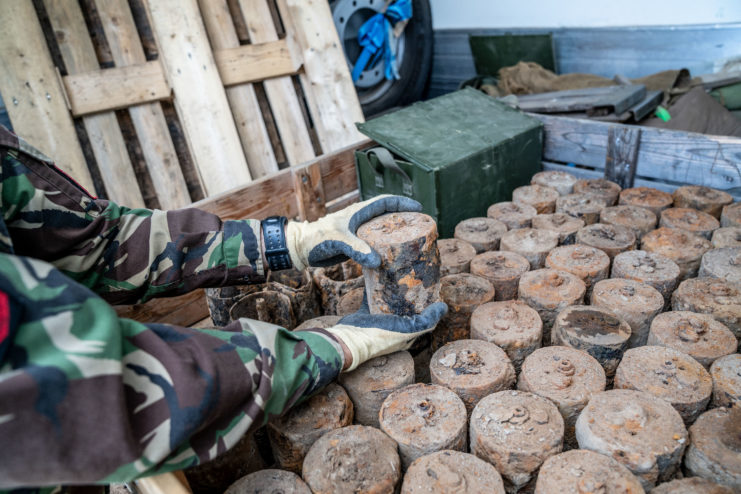
The S-mine was said to be lethal at 66 feet, but other sources state it could cause serious casualties up to 460 feet. Upon its use, it was clear the explosive was a powerful weapon and would be an ideal partner for anti-tank mines. After the efficacy was proven, S-mines were developed in droves and planted liberally throughout the front by German troops. Over the course of a decade, almost two million were produced.
Allied troops, specifically the French, first encountered S-mines through minor probes of the Saarland during the Saar Offensive, where thousands were planted as a protective measure. Along with the nickname “Bouncing Betty,” the mine also became known as the “silent soldier.”
In addition to the Saarland, the Atlantic Wall was littered with them. As well, in preparation for the anticipated attack on D-Day, S-mines were planted along the beaches of Normandy as a means to defend German positions. The devices were also used during the German-occupation of North Africa and to defend against the Allied invasion of Italy in September 1943.
Allied countries worked to copy the design
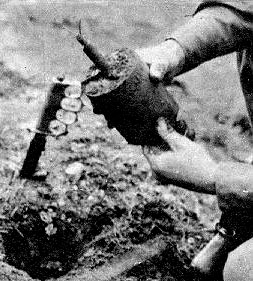
The S-mine did more than just physically injure soldiers. Word of its effectiveness spread quickly after it was introduced, causing a psychological fear to develop in soldiers. As Lt. Col. C.E.E. Sloan wrote in his book, Mine Warfare on Land, it was “probably the most feared device encountered by Allied troops in the war.”
This was due to the serious injuries S-mines caused if they weren’t close enough to outright kill a soldier. Once triggered, the devices would blast their explosives at waist height, causing serious damage to limbs and genitalia. As well, despite being easy to detect due to their metal configuration, the equipment needed to do so was heavy, expensive and not available to all infantry units. Most had just their knives to probe the soil for the mines.
It didn’t take long for the Allies to try and imitate the S-mine. France developed the Mle 1939 shortly after the device hit the battlefield, while the United States developed the M2 and M16. The Soviets also created their own mines, known as the OZM series, and Yugoslavia introduced the PROM-1, which saw widespread use during the Croatian War of Independence.
What happened to Germany’s surplus of S-mines?
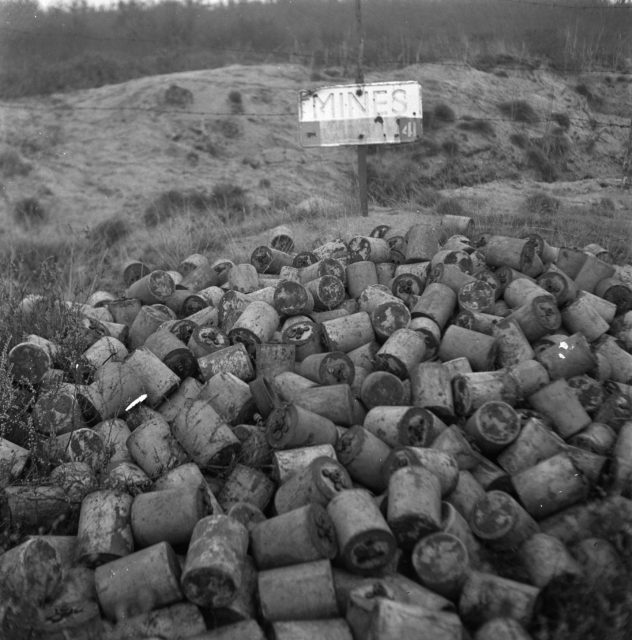
Following the Second World War, many S-mines remained buried in former German-occupied areas. During the occupation of West Germany and the postwar rebuilding of Europe, multiple groups banded together to sweep the continent in one of the most prolonged and successful mine clearing operations to ever be conducted.
In Western Europe, the majority of landmines were eliminated. The same could not be said, however, for parts of North Africa, former Warsaw Pact countries, France and Germany. These nations still experience sporadic accidental explosions.
More from us: The US Army Once Tried to Turn a Nerf Football Into a Grenade
What happened to the stockpile of S-mines following the the war remains unknown. It’s believed the vast majority of remaining devices were destroyed as part of the disarmament of Germany. Some may have even been kept by Allied troops for reverse engineering analysis.
